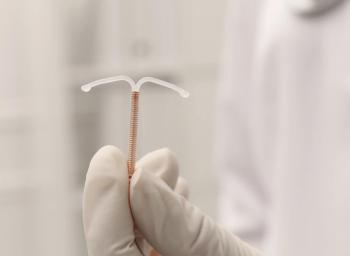
Tebipenem HBr met primary endpoints in a phase 3 trial, showing oral efficacy comparable to IV carbapenem for complicated urinary tract infections.

Tebipenem HBr met primary endpoints in a phase 3 trial, showing oral efficacy comparable to IV carbapenem for complicated urinary tract infections.

A study reveals a sharp rise in telehealth medication abortion use following the Dobbs v Jackson Women’s Health Organization ruling.

A review presented at The Menopause Society 2025 highlights the links between menopause-related brain changes and cognitive function.

A large TriNetX analysis found hormone therapy use in postmenopausal women was linked to a higher incidence of autoimmune diseases.

In a study led by Eugene Declercq, PhD, MBA, infants born to mothers who died during or after pregnancy faced higher mortality rates.

A study found that prenatal exposure to antenatal corticosteroids increases the long-term risk of respiratory and nonrespiratory infections.

Moe Takenoshita, MBBCh, found that cesarean delivery was linked to a 16% higher risk of developing sleep disorders within a year after childbirth.

Complications from pelvic floor polypropylene mesh appear linked to host immune response rather than oxidative material degradation.

A study found no link between first-trimester mRNA COVID-19 vaccine exposure and major congenital malformations.

Eve Zaritsky, MD, reports that e-visits are a safe, effective, and accessible option for patients seeking oral contraceptives.

Review some of the top stories from the Contemporary OB/GYN website over the past week and catch up on anything you may have missed.

A new study found that the severity of pelvic pain in patients with endometriosis affects health-related quality of life through the influence of coping mechanisms.

New research from Penn State reveals that endometriosis disrupts the autonomic nervous system, offering clues for earlier diagnosis.

A national survey found that over half of Americans mistakenly believe women cannot safely give birth in their 40s.

A study highlights the need for culturally responsive, patient-centered care to address the experiences of Black women with endometriosis.

A study found that individuals’ ability to achieve their pregnancy preferences differs across sociodemographic factors.

Infants born to mothers in rural areas face greater odds of low Apgar scores and limited prenatal care access.

Ethan Lowder, BA, and Alexander Nagrebetsky, MD, MSc, reported that nearly 80% of children fast longer than recommended before surgery.

Women with prior cesarean delivery are more likely to experience severe pain, sleep disturbances, and daily activity disruption postpartum.

The Menopause Society’s 2025 meeting heads to Orlando with sessions on longevity, hormones, cognition, and care innovation at midlife and beyond.

Women who undergo cesarean delivery during advanced labor face a greater risk of scarring that may increase preterm birth risk in future pregnancies.

Researchers from found that hormone replacement therapy may restore immune function changes linked to menopause.

Disability insurance is essential for physicians' financial wellness, yet education on income protection remains lacking in medical training programs.

Three-year results from the ACCORd trial show sustained LARC use, higher satisfaction, and fewer unintended pregnancies with physician training.

A study found that while women show faster reaction times during ovulation, regular physical activity has a greater impact on enhancing cognitive function.

New reveals that nearly one-third of patients with long COVID develop postural orthostatic tachycardia syndrome.

Carrie B. Hruska, PhD highlights how molecular breast imaging can reveal up to 2.5 times more invasive breast cancers than mammography alone.

Women undergoing mastectomy face greater risks of emotional distress, physical symptoms, and reduced quality of life compared with breast-conserving procedures.

Supplemental molecular breast imaging more than doubled invasive cancer detection rates in women with dense breasts.

Review some of the top stories from the Contemporary OB/GYN website over the past week and catch up on anything you may have missed.